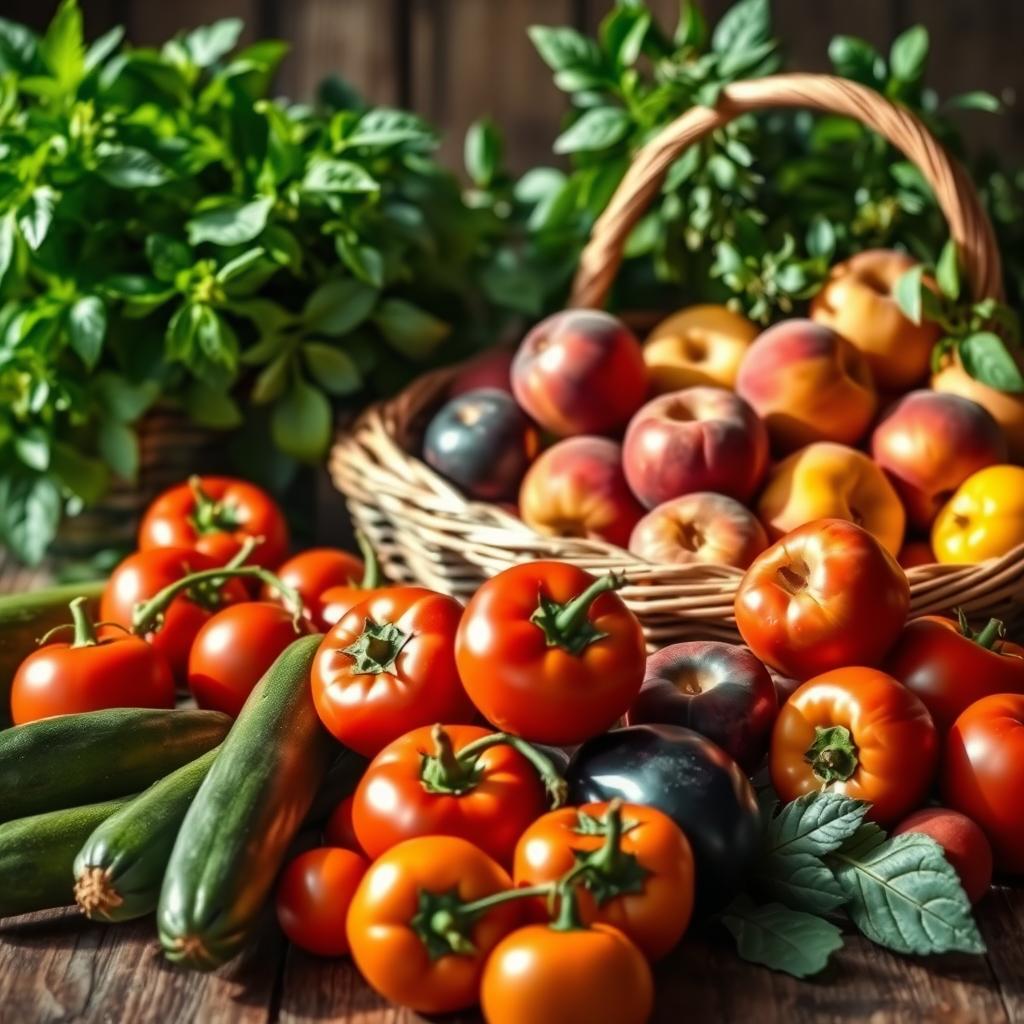Summer brings a feast for food lovers, inviting us to explore farmers’ markets and grocery aisles. My first experience with picking the perfect seasonal produce was magical. It was like learning a secret language that made my cooking special.
Choosing the right fruits and veggies is more than just picking the first thing you see. It’s about using all your senses – touch, sight, and smell. Fresh, local ingredients are key to healthy summer dishes, adding flavors that make your meals shine.
This guide will teach you to become a produce expert. You’ll learn to pick the most vibrant, tasty ingredients for amazing summer dishes. Whether you’re an experienced cook or just starting, knowing how to choose fresh produce will make your meals unforgettable.
Key Takeaways
- Develop a keen eye for selecting the freshest seasonal produce
- Learn to use all your senses when choosing fruits and vegetables
- Understand the importance of local and fresh ingredients
- Discover how proper selection impacts meal quality
- Gain confidence in navigating farmers’ markets and grocery stores
Understanding Seasonal Summer Produce
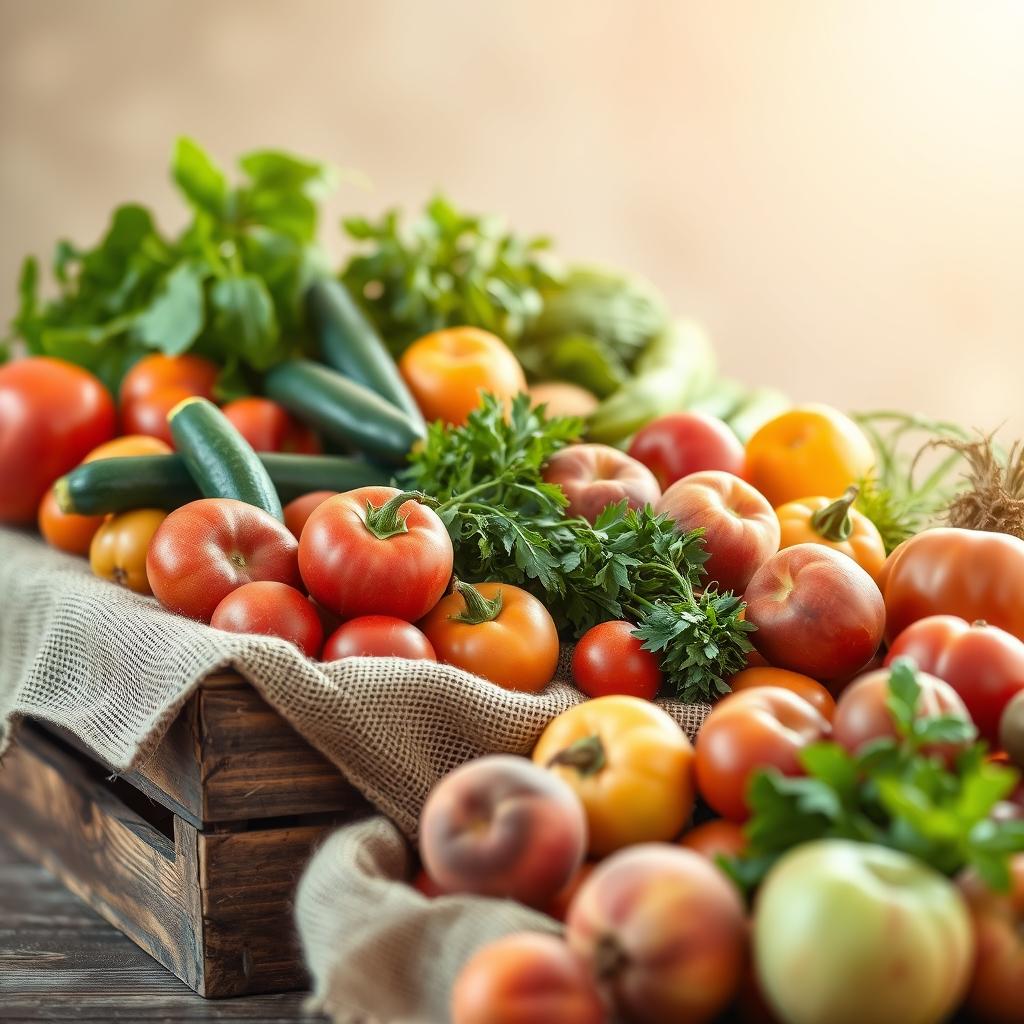
Summer brings fresh, vibrant ingredients that can make your salads amazing. Seasonal produce is not just tasty—it’s also healthy and sustainable.
Choosing the right seasonal produce means knowing when different veggies are at their best. This way, you get the most flavor and nutrients.
Importance of Choosing Fresh Ingredients
Fresh ingredients are key to great summer cooking. The quality of your meals depends on your seasonal produce choices. Here are some tips for picking summer veggies:
- Color vibrancy indicates freshness
- Firm texture suggests peak ripeness
- Minimal blemishes show high quality
The Benefits of Eating Seasonal Foods
Eating seasonal produce has many benefits beyond taste. Here are some reasons to choose local, seasonal ingredients:
| Benefit | Description |
|---|---|
| Nutrition | Peak-season veggies have more nutrients |
| Cost | Seasonal produce is often cheaper |
| Sustainability | Supports local farmers and cuts down on emissions |
For example, okra is at its best in late August. You’ll find crisp, fresh okra perfect for grilling or pickling. It’s great for making refreshing salads that really capture summer’s spirit.
Selecting Fresh Okra
Starting with the right produce is key to delicious grilled vegetables. Okra is a great choice for a vegetarian barbecue. But picking the perfect pods needs some know-how.
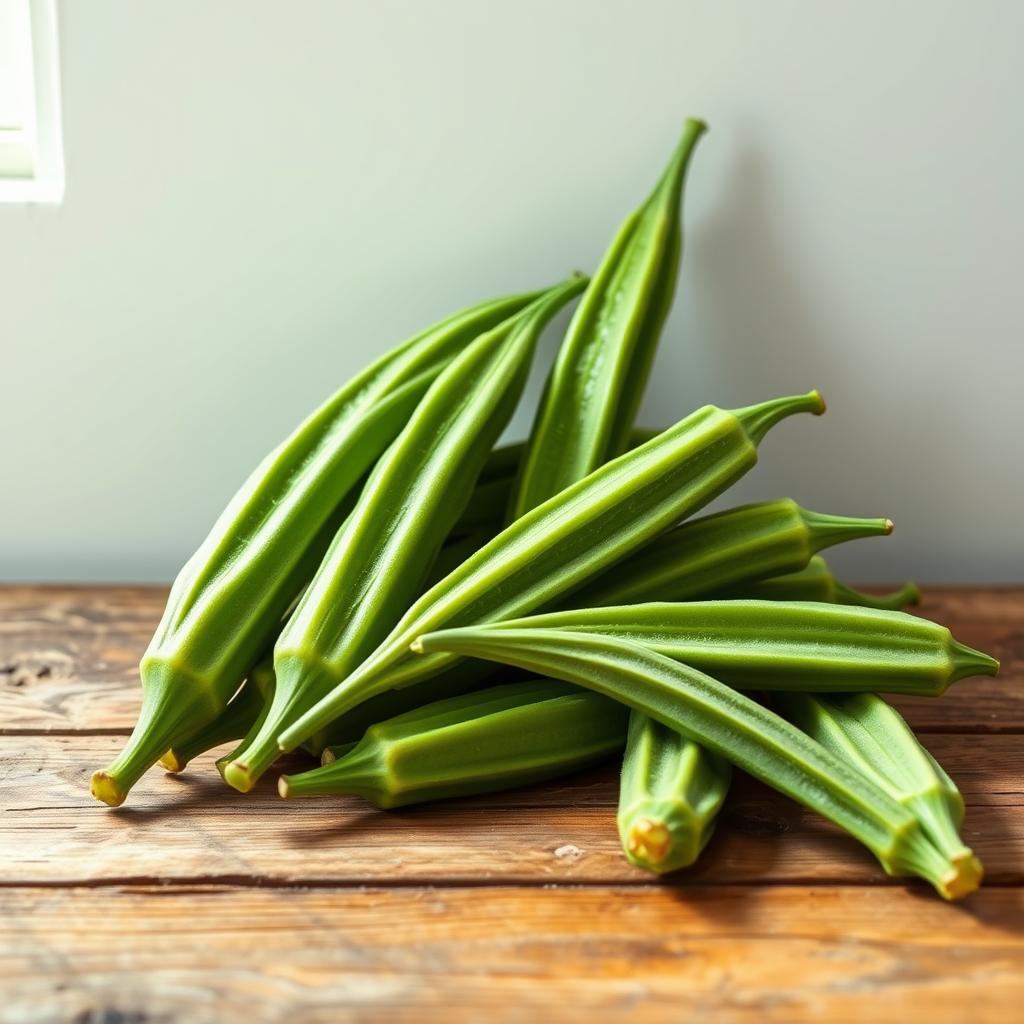
When looking for the best okra, remember a few important things. The right choice can make your grilled vegetables a hit.
Signs of Ripeness to Look For
- Choose pods shorter than your thumb for maximum tenderness
- Look for vibrant grass green, red-tinged, or slightly purple colors
- Pods should feel firm but not hard when gently squeezed
- Avoid okra with brown spots or dark streaks
Choosing the Right Size and Color
Size is crucial when picking okra for your vegetarian barbecue. Smaller pods are more tender and taste better. Okra pods under 4 inches are best for grilling.
Common Mistakes When Buying Okra
- Picking oversized, woody pods that become tough when cooked
- Purchasing okra with visible blemishes or discoloration
- Buying okra too far in advance of cooking
- Ignoring the importance of freshness
Pro tip for your grilled vegetables: Use okra within a day or two of buying. If you can’t cook right away, store it in the fridge. Use it as soon as you can to keep the flavor and texture great.
Corn: How to Pick the Best Ears
Summer brings delicious grilled vegetables, and corn is a standout. Choosing the perfect ear can make your summer meals better. It adds a special touch to grilled vegetable dishes with zesty marinades.
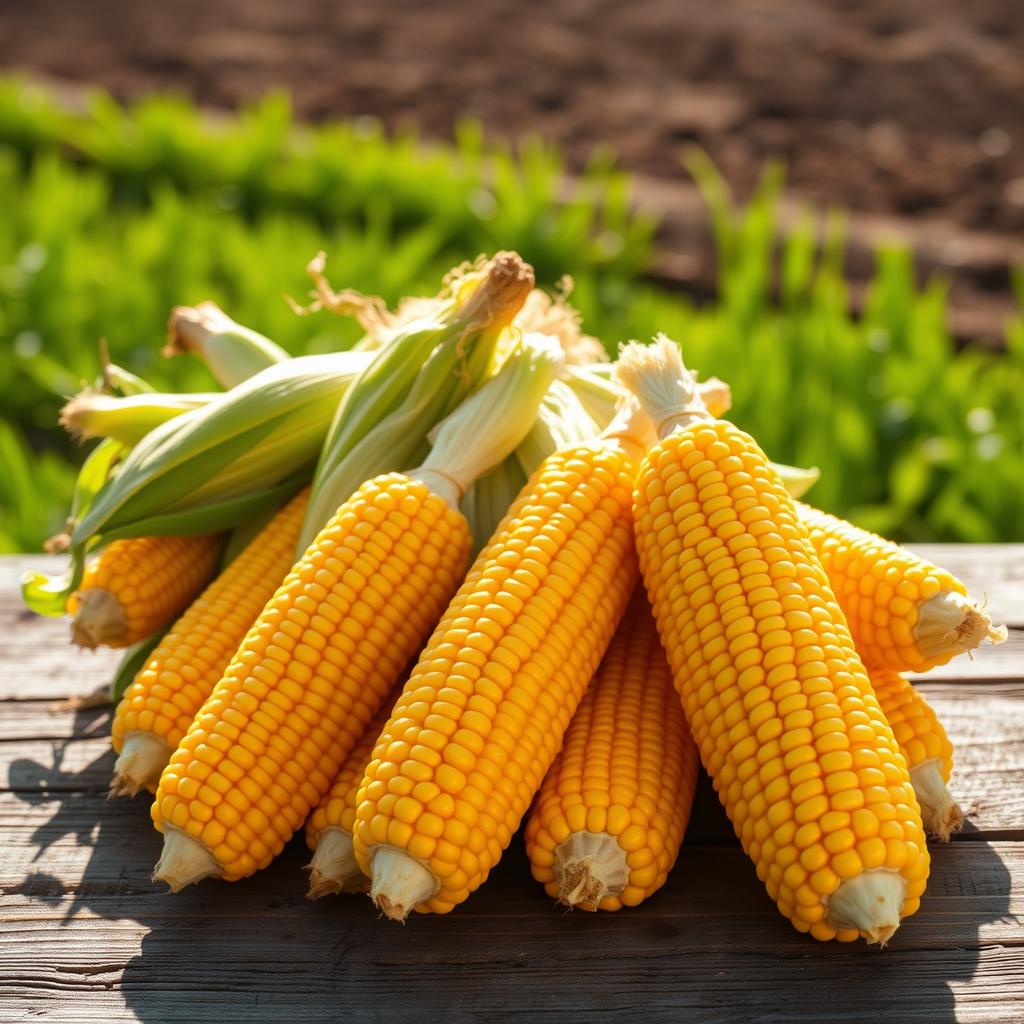
When looking for the best corn, trust your senses. Fresh corn should feel heavy and have bright green, tight husks. These should look crisp and healthy.
What to Look for in Fresh Corn
- Bright green, tightly wrapped husks
- Moist, golden-white or yellow kernels
- Silks that are soft and slightly sticky
- No brown spots or dried-out sections
The Impact of Timing on Flavor
Corn’s sweetness is at its peak just hours after it’s picked. Pro tip: Cooking corn soon after picking keeps more sugar in, making it taste amazing. It’s perfect for grilled vegetables with zesty marinades.
How to Store Corn for Freshness
Store corn in the fridge with husks on. It’s best to use within 1-2 days for the best taste. If you can’t cook it right away, freezing is a good option. 2 ears of corn can become a cup of delicious kernels for later.
Whether you’re using corn raw, grilling it, or freezing it, picking the right ear is key. It makes your summer cooking adventures even better.
Tomatoes: Finding the Perfect Variety
Summer is the time for delicious tomatoes. They’re perfect for light pasta dishes and cool summer soups. Knowing how to pick and handle them can make your food taste better.
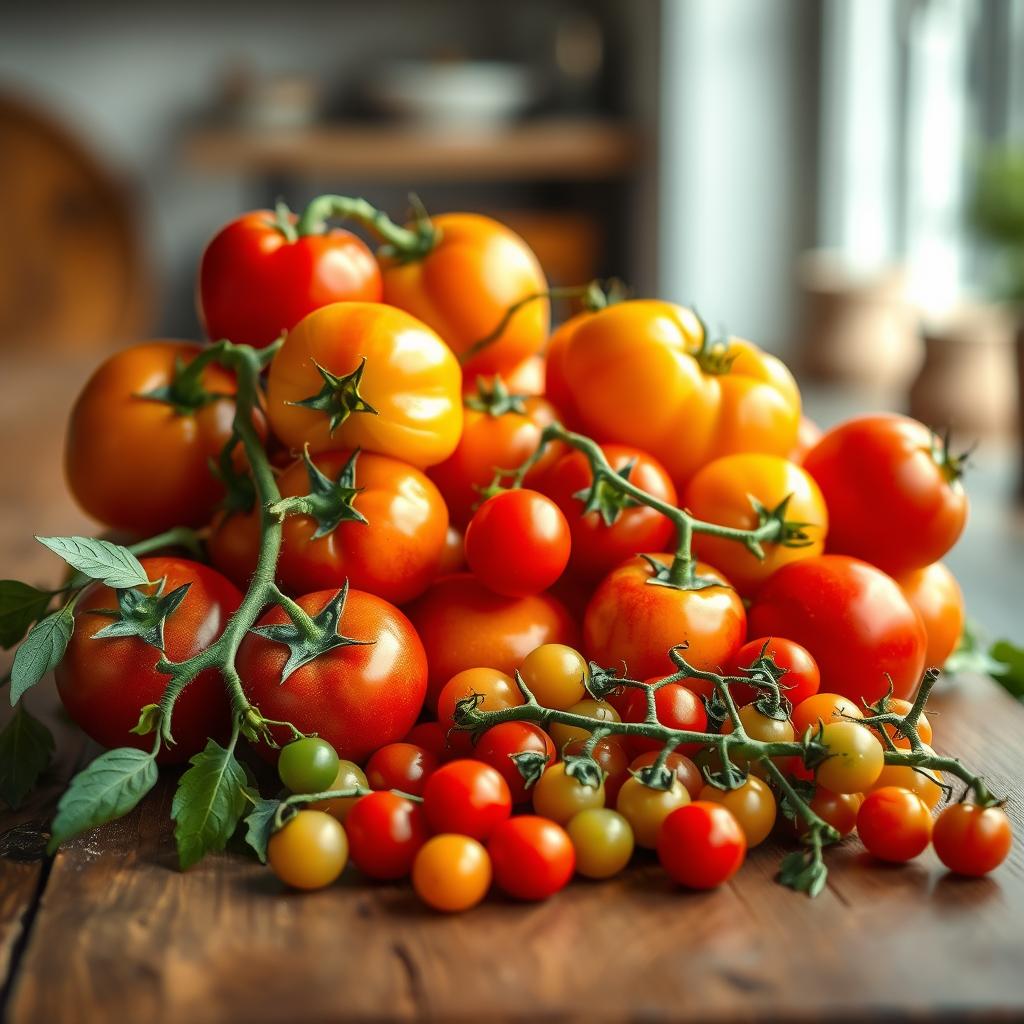
There are many tomato types to try in your summer cooking. Let’s explore these fruits and find the best ones for your meals.
Popular Summer Tomato Varieties
- Beefsteak: Large, meaty tomatoes ideal for sandwiches
- Cherry: Sweet, small tomatoes perfect for salads
- Roma: Firm texture great for sauces and canning
- Heirloom: Unique colors and rich, complex flavors
Signs of a Good Tomato: Color and Texture
Choosing the best tomatoes takes some skill. Look for fruits that are:
- Deeply colored without green or yellow patches
- Firm but slightly soft when gently squeezed
- Free from bruises or soft spots
- Featuring a rich, earthy aroma at the stem
How to Handle Tomatoes Properly
| Storage Method | Best Practices |
|---|---|
| Counter Storage | Keep uncut tomatoes at room temperature, away from direct sunlight |
| Refrigeration | Only store chopped tomatoes; whole tomatoes lose flavor when chilled |
| Preservation | Freeze or dehydrate excess tomatoes for future use in summer soups |
Follow these tips to get the most out of your summer tomatoes. They’ll make your pasta dishes, salads, and soups even better.
Preparing Grilled Okra, Corn, and Tomato Salad
Summer cooking hits new heights with a vibrant grilled vegetables salad. It captures the essence of seasonal produce. This recipe turns fresh ingredients into a mouthwatering dish that will wow your family and friends.
Grilling summer produce needs careful preparation and attention. Your zesty marinades will boost the natural flavors of each ingredient. This creates a memorable culinary experience.
Step-by-Step Grilling Instructions
- Prepare your vegetables by washing and trimming:
- 2 ears of corn, shucked
- 5 ounces okra, sliced vertically
- 3 zucchini
- 1/2 pound cherry tomatoes
- Preheat grill to medium-high heat
- Lightly brush vegetables with olive oil
- Grill vegetables until they develop nice char marks
Tips for Enhancing Flavor
Boost the taste of your grilled vegetables with zesty marinades. Here are some tips:
- Add crushed garlic cloves during grilling
- Sprinkle fresh thyme sprigs
- Use Aleppo pepper or red chile flakes for heat
Dressing Options for Your Salad
Finish your grilled vegetables masterpiece with a delightful dressing. Try these combinations:
- Sherry vinegar with torn basil leaves
- Balsamic vinegar with cilantro
- Optional cheese topping: queso fresco or feta
Your summer salad is now ready to serve. It’s a perfect celebration of fresh, seasonal ingredients!
Storing Your Fresh Produce
Keeping your seasonal produce fresh is crucial for enjoying healthy summer recipes. The right storage can make your veggies last longer. It also keeps their nutrients and taste intact.
Each vegetable needs its own storage method to stay fresh and tasty. Knowing these tips will help you enjoy your farmers’ market and garden picks.
Proper Storage Techniques for Okra
Fresh okra needs careful handling to stay crisp and flavorful. Here’s how to store it:
- Store unwashed okra in a paper bag in the refrigerator
- Use within 2-3 days for optimal freshness
- Avoid storing in plastic bags, which trap moisture
- Pat dry before storing to prevent sliminess
Keeping Corn Fresh in the Refrigerator
Corn is best eaten quickly, but you can keep it fresh longer with the right storage:
- Keep corn in husks until ready to use
- Store in the refrigerator’s crisper drawer
- Consume within 1-2 days for maximum sweetness
- Wrap loosely in damp paper towels to retain moisture
Storing Tomatoes to Maximize Flavor
Tomatoes need special care to keep their taste and texture:
- Store ripe tomatoes at room temperature
- Keep away from direct sunlight
- Place stem-side down to prevent bruising
- Refrigerate only if absolutely necessary
By using these storage tips, your produce will stay fresh for your summer recipes. Proper storage not only keeps your veggies fresh longer. It also helps keep their nutrients and taste.
Creative Ways to Use Leftover Produce
Summer produce is full of possibilities for making tasty meals from leftovers. You can turn extra okra, corn, or tomatoes into exciting dishes. These creations will make your taste buds happy and help reduce food waste.
Get ready to explore new ways to use your summer vegetables. You’ll find light pasta dishes and summer soups that bring out the season’s flavors.
Exciting Dishes with Okra and Corn
- Create a spicy North Indian bhindi masala with tomato sauce and aromatic spices
- Prepare crispy okra with a ponzu-inspired dipping sauce
- Craft a hearty gumbo featuring seafood and vegetables
- Make grilled okra in a summer vegetable salad with lime and jalapeño
Transforming Tomatoes into Everyday Meals
Tomatoes are great for light pasta dishes and summer soups. Here are some creative ideas:
- Whip up a refreshing panzanella salad with gigante beans and fresh herbs
- Bake a stunning tomato-cheese tart in puff pastry
- Prepare a chopped summer salad mixing tomatoes, corn, and optional fruits
- Create a zesty summer soup with roasted tomatoes and fresh basil
Quick and Flavorful Cooking Tips
When using leftover summer produce, keep these tips in mind:
- Select smaller, bright green okra pods for best flavor
- Cook vegetables quickly at high heat to preserve nutrients
- Experiment with different spices and herbs to enhance taste
- Don’t be afraid to mix and match vegetables in your recipes
By being creative with your summer produce, you’ll find new ways to enjoy seasonal ingredients. This approach also helps reduce food waste.
The Health Benefits of Okra, Corn, and Tomatoes
Summer brings more than tasty food to your table. Okra, corn, and tomatoes are packed with nutrients. They turn your summer meals into healthy, flavorful dishes. These veggies are full of health benefits, making them key in salads and home cooking.
Nutritional Powerhouse: Okra
- Rich in vitamin K for bone health
- Contains powerful antioxidants like quercetin
- High in dietary fiber for digestive wellness
- Supports heart health through folate content
- May help regulate blood sugar levels
Corn and Tomatoes: Completing the Nutritional Lineup
Corn adds important minerals and fiber. Tomatoes burst with lycopene and vitamin C. Together, they offer a balanced mix of nutrients. This supports your immune system and heart health.
Using these ingredients in your recipes nourishes your body. Salads with okra, corn, and tomatoes are both tasty and nutritious. They help keep your diet balanced during the summer.
Recipes to Try With Your Summer Produce
Summer brings a bounty of fresh ingredients perfect for creating delightful vegetarian barbecue dishes and refreshing fruit smoothies. Your kitchen becomes a playground of flavors. It transforms seasonal produce into memorable meals that celebrate the season’s abundance.
Explore these exciting recipe variations that will elevate your summer cooking:
Grilled Okra, Corn, and Tomato Salad Variations
- Charred Okra and Corn Salad: A 40-minute dish featuring spicy sausage vinaigrette and heirloom tomatoes
- Quick stir-fry with fresh corn, red chiles, scallions, and garlic (25 minutes)
- Crunchy roasted okra with sweet and smoky spice rub, served with golden labneh (50 minutes)
Complementary Side Dishes
Pair your vegetarian barbecue creations with these delightful sides:
- Grilled summer squash
- Sweet cherry tomato salad
- Black bean and corn mix
- Green garbanzo bean medley
Refreshing Fruit Smoothies
Transform your leftover summer produce into delicious fruit smoothies. Blend ripe tomatoes, corn, and fresh herbs for unexpected and vibrant drink combinations. These drinks complement your grilled dishes perfectly.
Pro tip: Experiment with cheese options like queso fresco, cotija, or feta to add depth to your vegetarian barbecue recipes. Garnish with fresh herbs such as basil, cilantro, or mint for an extra flavor boost.
Tips for Visiting Your Local Farmers’ Market
Exploring your local farmers’ market is exciting. You can find fresh, seasonal produce for your summer recipes. These markets are more than just places to buy food. They connect you directly to local farmers and fresh ingredients.
Visiting farmers’ markets lets you pick the best seasonal produce. You also support local farmers. Your shopping trip can be both tasty and educational.
How to Spot Quality Produce
Here are some tips for finding top-quality fruits and veggies:
- Look for bright, vibrant colors without bruises or spots
- Check stems and roots for freshness – crisp and green means it’s new
- Examine texture – firm produce is usually at its best
- Smell your produce – fresh items have a strong, nice smell
Engaging with Local Farmers
Talk to the vendors at the market. Local farmers can share a lot about their growing methods and produce. Ask them about:
- Organic farming methods
- How to store produce
- Best ways to prepare specific fruits and veggies
- When different crops are in season
Building relationships with local farmers can help you pick the freshest produce. Your market visits become a culinary journey!
The Environmental Impact of Choosing Local Produce
Your food choices can really help the environment. By picking seasonal produce, you’re not just making a tasty vegetarian barbecue. You’re also supporting sustainable farming and local nature.
Seasonal eating has big benefits for the planet. It’s not just about your meal. It helps cut down on carbon emissions and boosts local farming.
Supporting Sustainable Agriculture
Local seasonal produce has many good points for the environment:
- It cuts down on carbon emissions by avoiding long trips.
- It backs farming that needs less fake preservatives.
- It promotes crops that grow well in local weather.
- It uses less water by picking the right crops.
Community and Environmental Impact
Your choices help local farming areas. Buying seasonal produce from local farmers keeps farming diverse. It supports small farmers and makes food systems stronger.
When you plan your next vegetarian barbecue, think about getting ingredients from nearby farms. This choice can greatly reduce waste, lower emissions, and help the food system grow greener.
Conclusion: Making the Most of Summer Produce
Summer brings a chance to try healthy summer recipes with fresh, local ingredients. You don’t need to make it hard. Simple techniques can turn veggies like okra, corn, and tomatoes into amazing dishes.
Creating refreshing salads is an art when you know how to pick, store, and prepare summer produce. Use the tips on choosing fresh veggies at farmers’ markets and storing them right. Your kitchen can be a place of creativity, where every ingredient tells a story.
Summer cooking is all about trying new things. Don’t be scared to mix flavors and learn from each dish. Whether it’s grilling okra, roasting corn, or making a tomato salad, you’ll get better with each meal. Enjoy the joy of eating with the seasons and share your food with others.
Choosing local, fresh produce does more than just feed you. It supports local farmers, helps the environment, and gives you the best ingredients. Keep exploring, tasting, and enjoying the summer’s gifts.

